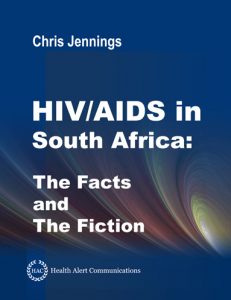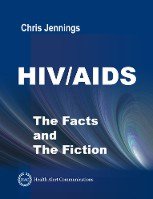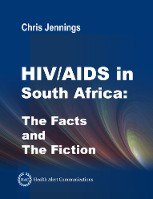
Is the use of estimates in measuring HIV/AIDS leading to other diseases being wrongly classified?
Few people realise that the familiar HIV/AIDS global statistics that one sees, hears, and reads in the media are actually just estimates. The numbers you hear are not actual counts of HIV/AIDS cases nor actual counts HIV/AIDS deaths. Only estimates generated by computers.
For example, UNAIDS estimated that South Africa had 140,000 HIV/AIDS deaths in 1997. However, after tabulating all death certificates for 1997, South Africa attributed only 6,635 deaths to HIV/AIDS.
Such discrepancies are rarely noted. The familiar UNAIDS/WHO estimates are widely displayed in slide shows and publications, and echoed on TV and radio. Conversely, national internal surveillance data and death counts do not receive wide distribution. However, the computer models that generate the WHO/UNAIDS estimates incorporate two common misconceptions about the nature of HIV infection. First, they utilize a nine – 11-year survival period for HIV infection, a longevity that corresponds with the respective belief that HIV has an average, 10-year, silent incubation period.
By 1983, even before HIV had been discovered, the Centers for Disease Control (CDC) determined that AIDS had an average incubation period of eight to 18 months, which the CDC determined by actively tracking and interviewing patients. Danish physicians reported similar incubation periods. In addition, there are reports of two-month and six-month incubation periods following homosexual contact, blood transfusion, or IV needle transmission. Reports of these incubation periods were not widely distributed. Rather, the incubation periods imputed into the computer models are mathematical models themselves.
In the US, early in the epidemic, 50% patients died within 12 months of manifesting opportunistic infection(s). Therefore, among adults, the wave of AIDS deaths begins at approximately 20 months into HIV infection, not 10 years as currently conceived, thereby changing the distribution curve.
This situation was exemplified by the first two years of the AIDS epidemic in the US. By August 1983, thirty-eight percent (38%) of all known AIDS patients had died. The death rate was 71% for any patients diagnosed more than a year previously. Only 2% – 5% of patients survived five years after developing opportunistic disease(s).
Infants born with HIV infection typically survived nine months.
These mortality rates represent patient outcomes among “untreated” patients. Essentially, prior to 1985, these AIDS patients remained “untreated” because no available medications effectively treated HIV infection and its consequent opportunistic infections.
In South Africa, one should expect comparable patient outcomes. The greater majority of the indigent Africans purported to have HIV infection would also remain untreated because of lack of access to adequate medical care.
Per UNAIDS estimate, South Africa had 2,900,000 people living with HIV/AIDS in 1998. If this estimate were correct, then at least 1.1 million (38%) should have died by the end of 2002. This four-year time period allows two years for incubation; then, once opportunistic diseases have appeared, approximately 38% of these AIDS patients should have died within the following two-year period, presuming a death rate comparable to that of their American counterparts. Even allowing a mean 11-year survival period, the upper level inducted into the computer models, a substantial portion of these 2.9 million people should have died by 2008. Yet, South Africa tabulated a total of 136,000 HIV/AIDS deaths for 1997 – 2008, inclusive.
The second problem with the computer models is their utilisation of HIV seroprevalence data – surveys conducted with the HIV antibody test. The most widely available epidemiological data on HIV/AIDS in Africa are seroprevalence data, and, simply stated, the HIV assays are invalid among select indigent, tropical populations.
In Africa, the populations purported to be afflicted with HIV/AIDS epidemics also are typically afflicted by tuberculosis, pneumonias, diarrheal illness, and other adverse health conditions secondary to poverty, such as malnutrition and likely exposure to insanitary food and water. Although these medical conditions themselves apparently have no direct statistical or chemical correlation with HIV seropositivity, their presence presumably serves as marker – a “red flag” – for populations whose immune systems are chronically inflamed. Antibodies generated by such inflamed immune systems apparently react with the HIV proteins and/or other chemical components of the HIV assay; yielding inordinately high levels of false-positives.
For example, South Africa, the HIV seroprevalence rate of first-time pregnant women averages 25% to 30%. The South African health authorities utilize these data from antenatal clinics in computer models to calculate the national HIV prevalence rate (17%), and the estimated number of PLWH (people living with HIV/AIDS) in South Africa (5.6 million).
(Health authorities in South Africa do not believe in the validity of their own empirical findings, i.e. the death counts. Rather, their faith lies in the WHO/UNAIDS computer models.)
Such HIV seroprevalence rates exceed all human plausibility of heterosexual HIV transmission. Theoretically, given the relative per exposure risk of HIV transmission during anal intercourse versus vaginal intercourse, the black African heterosexual men of South Africa would require sexual contact with approximately 100 – 400 different female partners every six months – presumably multiple times with each partner – in order to instigate an HIV/AIDS epidemic comparable to that seen among gay men in New York City at the beginning of the AIDS epidemic. (Prior to AIDS, gay men in NYC averaged 20 different sexual partners every six months; the efficiency of HIV transmission to receptive partner during anal intercourse is approximately five – 20 greater than during vaginal intercourse. Reminder: not all gay men are highly sexually active nor engage in anal intercourse.)
These rudimentary calculations should not be considered quantitatively accurate. Rather, these numbers should be used qualitatively, i.e.‘Given these theoretical transmission rates, and the different social climes of gay men in New York City and the rural villages of South Africa, does the concept of a decimating heterosexual HIV/AIDS epidemic among the rural populations of South Africa seem possible?’ The qualitative question is does this concept ‘pass’ or ‘fail’? Or, rather, do the words of research fellow Dr Stuart Derbyshire seem more appropriate and prophetic? “The danger of the AIDS epidemic is dwarfed by 3.5 million deaths from tuberculosis and 16.8 million deaths from malaria since the beginning of the AIDS epidemic. The frightening scenario looms that widespread, but curable, diseases are wrongly classified as AIDS-related complex, thereby foregoing appropriate treatment.”
First published in Think Africa Press
Related Blogs:
- The Implausibility of HIV/AIDS Statistics in South Africa (Video)
- The Implications of Bad HIV/AIDS Science in Africa
- How Laboratory Contamination Spawned the Theory that HIV came from African Monkeys (Video)
- How Laboratory Contamination Spawned the Theory that HIV came from African Monkeys (Text)
- HIV / AIDS The Facts And The Fiction
- HIV / AIDS in South Africa: The Facts and The Fiction






Leave a Reply